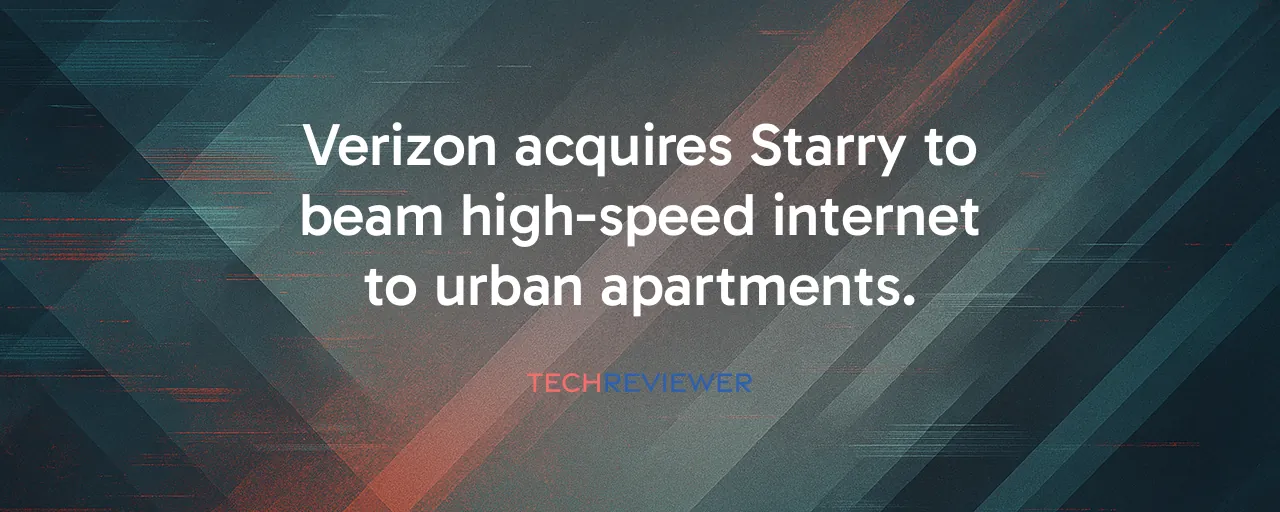A New Era for Urban Broadband
Verizon's recent acquisition of Starry, a wireless internet provider, marks a bold step toward reshaping how city dwellers connect to the internet. Starry's technology, which beams high-speed internet via millimeter-wave antennas, offers a clever workaround to the costly and slow process of laying fiber cables in densely packed urban areas. With this deal, expected to close in the first quarter of 2026 pending FCC approval, Verizon aims to bring faster, more accessible broadband to apartments and condos, where traditional wiring often hits logistical snags.
Starry's approach is straightforward yet innovative. Instead of digging up streets or navigating complex building permissions, it uses rooftop antennas to send gigabit-speed signals directly to homes. This wireless method, built on the 37.0 to 38.6 GHz spectrum, sidesteps the headaches of physical infrastructure, making it a game-shifter for multi-dwelling units. Verizon, already a heavyweight in 5G and fiber, sees Starry's nearly 100,000 customers across cities like Boston and Los Angeles as a ready-made foundation to expand its reach.
Why Apartments Are the Battleground
Urban apartments and condos present a unique challenge for broadband providers. Running cables through multi-tenant buildings often requires landlord approval, tenant coordination, and costly construction, which can delay service for months. Starry's wireless solution cuts through this red tape by delivering connectivity from a single rooftop antenna to multiple units, often within days. For residents, this means quicker access to high-speed internet at competitive prices, like Starry's $30 monthly plan for 200 Mbps.
Verizon's acquisition taps into this potential, leveraging its vast fiber backbone and 5G expertise to scale Starry's model, supporting its strategic goal of reaching 8 to 9 million fixed wireless subscribers by 2028. Property managers, who often negotiate bulk internet deals, stand to benefit as well. They gain a flexible, high-speed option that avoids disruptive installations, potentially attracting tenants who prioritize connectivity. Yet, the technology's reliance on clear signal paths raises questions about reliability in buildings with obstructions, a hurdle Verizon will need to address.
Lessons From Boston and Beyond
Starry's journey offers valuable insights into the promise and pitfalls of wireless broadband. Since launching in Boston in 2016, the company proved that millimeter-wave technology could deliver fiber-like speeds in urban settings, building a loyal customer base, and emerged from Chapter 11 bankruptcy in August 2023 as a restructured private entity. Its success in cities like New York and Denver showed the model's scalability, but its 2023 exit from Columbus, Ohio, highlighted a key lesson: subscriber density matters. Without enough users to offset infrastructure costs, smaller markets can strain finances, as Starry learned during its bankruptcy restructuring.
T-Mobile's fixed wireless success tells a different story. By integrating its 5G network with existing tower assets, T-Mobile grew to 6.9 million subscribers by early 2025, capturing the lion's share of new broadband customers, while Verizon added 308,000 5G home internet customers in the same quarter. Its rapid expansion underscores the importance of leveraging existing infrastructure, a strategy Verizon likely aims to replicate with Starry's technology. These cases show that while wireless broadband thrives in dense urban cores, careful planning is needed to balance costs and coverage.
Balancing Speed, Scale, and Stability
Millimeter-wave technology, while powerful, comes with trade-offs. Its high-frequency signals deliver massive bandwidth but struggle with obstacles like walls or trees, requiring near-clear line-of-sight. This demands dense networks of antennas, which can drive up costs for installation and maintenance. Verizon's deep pockets and spectrum holdings, including 161 MHz of C-band, give it an edge in tackling these challenges, but scaling Starry's model nationwide will test its operational finesse.
Customers may wonder if Verizon will maintain Starry's affordable pricing or shift toward higher rates typical of major carriers. Regulators, too, are watching closely. The FCC will review the deal's impact on competition, especially in cities where Starry operates. With cable giants like Comcast losing ground to wireless alternatives, the acquisition could intensify pressure on traditional providers, potentially leading to better service and prices for consumers.
What's Next for Urban Connectivity
Verizon's move signals a broader shift in how internet access evolves in cities. Fixed wireless, once a niche alternative, now drives all U.S. broadband growth, with providers like Verizon and T-Mobile adding nearly a million subscribers quarterly. The technology's ability to deploy quickly and compete with cable makes it a vital tool for closing digital gaps, especially in underserved urban neighborhoods where fiber remains out of reach.
Still, challenges loom. Property owners may resist antenna installations due to aesthetic or health concerns, despite FCC compliance. Competitors like AT&T, with 800,000 fixed wireless customers, and T-Mobile's market lead keep the pressure on Verizon to innovate. As the company integrates Starry's technology, its ability to deliver reliable, affordable service will shape whether this acquisition sparks a new wave of urban connectivity or stumbles on technical and regulatory hurdles.
